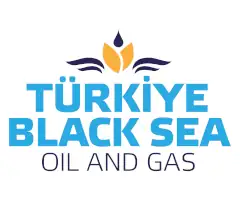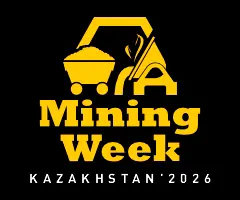System approach to effective interaction between mining enterprises and socio-economic infrastructure in the Arctic
 U.S. Ivanova1, N.Y. Chernegov2, Ju.V. Zvorykina2,3
U.S. Ivanova1, N.Y. Chernegov2, Ju.V. Zvorykina2,3
1 Atom-Region, Moscow, Russian Federation
2 Sergo Ordzhonikidze Russian State University for Geological Prospecting, Moscow, Russian Federation
3 Moscow State Institute of International Relations of the Ministry of Foreign Affairs of the Russian Federation; Moscow, Russian Federation
Russian Mining Industry №1 / 2025 p. 64-70
Abstract: The purpose of the study is to identify the development of approaches to organize the formation of management elements of mining industry development in the Arctic conditions. Methods. The study used data obtained through the content analysis of a large number of scientific publications, practical materials, expert opinions, regulations and company reports. Such methods as scientific generalization, classification, economic analysis, expertise and statistics were applied in the course of the work. In addition to the traditional methods, the study included the interdisciplinary approach. Results. The article considers the issues of organizing interaction between mining enterprises and the state in developing socio-economic infrastructure in the Arctic using the case study of the Chukotka Autonomous District. The dynamics of changes in the production volumes of mining companies has been analyzed, the factors influencing the efficiency of mineral and raw materials enterprises and their influence on the growth rate of the regional economy have been considered. The measures of state support of enterprises are investigated, the mechanisms to develop the support settlements in the Arctic, approaches to the creation of their master plans are analyzed. The possibilities of the system approach to the formation of clusters for the development of the region's economic potential in linking industrial facilities with the development of infrastructure and social sphere have been studied. Measures to support family-run business as one of the mechanisms of strengthening the human resources potential of the Arctic zone of the region are justified.
Keywords: system approach, enterprises of mineral and raw materials complex, Arctic, Chukotka Autonomous District, master plans, support settlements, mixed-type clusters, family-run business
Acknowledgments: The authors would like to express their gratitude to the editors and reviewers of the journal for useful comments and design advice in preparing the article for publication. Special thanks are extended to the Government of the Chukotka Autonomous Okrug for their involvement in the topic and discussion of the key points of the article, as well as to the team of the Russian DNA project for their support and constructive discussion of the research ideas. The article was prepared with the financial support of the Ministry of Science and Higher Education of the Russian Federation: registration number in the EGISU NIOCTR: 124092400007-7.
For citation: Ivanova U.S., Chernegov N.Y., Zvorykina Ju.V. System approach to effective interaction between mining enterprises and socio-economic infrastructure in the Arctic. Russian Mining Industry. 2025;(1):64–70. (In Russ.) https://doi.org/10.30686/1609-9192-2025-1-64-70
Article info
Received: 18.11.2024
Revised: 09.01.2025
Accepted: 15.01.2025
Information about the authors
Uljana S. Ivanova – Project Manager, Private Institution for Supporting the Implementation of Territorial Projects in the Nuclear Industry “Atom-Region”, Moscow, Russian Federation; e-mail: This email address is being protected from spambots. You need JavaScript enabled to view it.
Nikolay Yu. Chernegov – Cand. Sci. (Econ.), Associate Professor of the Department of Economics of Mineral Resources Complex, Sergo Ordzhonikidze Russian State University for Geological Prospecting, Moscow, Russian Federation; https://orcid.org/0000-0001-9950-8338; e-mail: This email address is being protected from spambots. You need JavaScript enabled to view it.
Julia V. Zvorykina – Dr. Sci. (Econ.), Professor, Sergo Ordzhonikidze Russian State University for Geological Prospecting, Moscow, Russian Federation; Moscow State Institute of International Relations of the Ministry of Foreign Affairs of the Russian Federation; Moscow, Russian Federation; https://orcid.org/0000-0002-9282-7114; e-mail: This email address is being protected from spambots. You need JavaScript enabled to view it.
References
1. Petrov A.N., Rozanova Smith M.S., Krivorotov A.K., Klyuchnikova E.M., Mikheev V.L., Pelyasov A.N., Zamyatina Na.Yu. The Russian Arctic by 2050: Developing integrated scenarios. Arctic. 2021;74(3):306–322. https://doi.org/10.14430/arctic73242
2. Garretsen H., Martin R. Rethinking (new) economic geography models: Taking geography and history more seriously. Spatial Economic Analysis. 2010;5(2):127–160. https://doi.org/10.1080/17421771003730729
3. Pilyasov A.N., Petrov A.A., Zamyatina N.Yu. Arctic economy: Internal structure, types, and national models. In: Pak E.V., Krivtsov A.I., Zagrebelnaya N.S. (eds) The Handbook of the Arctic. Palgrave Macmillan, Singapore; pp. 143–175. https://doi.org/10.1007/978-981-16-9250-5_8-1
4. Гальцева Н.В., Фавстрицкая О.С., Шарыпова О.А. Моноструктурное развитие экономики арктических территорий: российский и зарубежный опыт. Вестник Северо-Восточного научного центра ДВО РАН. 2015;(3):109–118. Galtseva N.V., Favstritskaya O.S., Sharypova O.A. Monostructural development of economy at the arctic territories: Russian and foreign experience. Bulletin of the North-East Scientific Center, Russia Academy of Sciences Far East Branch. 2015;(3):109–118. (In Russ.)/.
5. Winther G. Introduction to the project and the first volume of the political economy of northern regional development (POENOR). In: The Political Economy of Northern Regional Development. Vol. I. København: Norden; 2010, pp. 7–40.
6. Hill F., Gaddy C. The Siberian Curse: How Communist Planners Left Russia out in the Cold. Washington: Brookings Institution Press; 2003. 240 p.
7. Knapp G. An Introduction to the Economy of Alaska. February 2012. Available at: https://iseralaska.org/static/legacy_publication_links/presentations/2012_02-Introduction_to_Economy_of_Alaska.pdf (accessed: 18.12.2024).
8. Градобитова Л.Д. Проблема формирования внешнеэкономической политики буржуазного государства в системе государственно-монополистического капитализма скандинавского типа на современном этапе: дис. ... д-ра экон. наук. М.; 1985. 444 с.
9. Портер М. Международная конкуренция. М.: Международные отношения; 1993. 896 с. Режим доступа: https://djvu.online/file/1TRfy9Hmq6M4j (дата обращения: 07.12.2024).
10. Гранберг А.Г. Основы региональной экономики. М.: ГУ ВШЭ; 2000. 495 с.
11. Грошев И.В., Шапкина Ю.В. Бренд как «точка роста» территории инновационного развития. Маркетинг в России и за рубежом. 2012;(5):28–40. Режим доступа: http://www.mavriz.ru/articles/2012/5/6521.html (дата обращения: 07.12.2024).Groshev I.V., Shapkina Yu.V. Brand as a “growth point” of territory innovative development. Journal of Marketing in Russia and Abroad. 2012;(5):28–40. Available at: http://www.mavriz.ru/articles/2012/5/6521.html (accessed: 07.12.2024).




